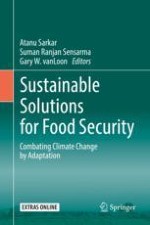2019 | OriginalPaper | Buchkapitel
15. Combating Climate Change Impacts for Shrimp Aquaculture Through Adaptations: Sri Lankan Perspective
verfasst von : J. M. P. K. Jayasinghe, D. G. N. D. Gamage, J. M. H. A. Jayasinghe
Erschienen in: Sustainable Solutions for Food Security
Aktivieren Sie unsere intelligente Suche, um passende Fachinhalte oder Patente zu finden.
Wählen Sie Textabschnitte aus um mit Künstlicher Intelligenz passenden Patente zu finden. powered by
Markieren Sie Textabschnitte, um KI-gestützt weitere passende Inhalte zu finden. powered by
